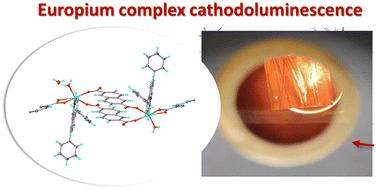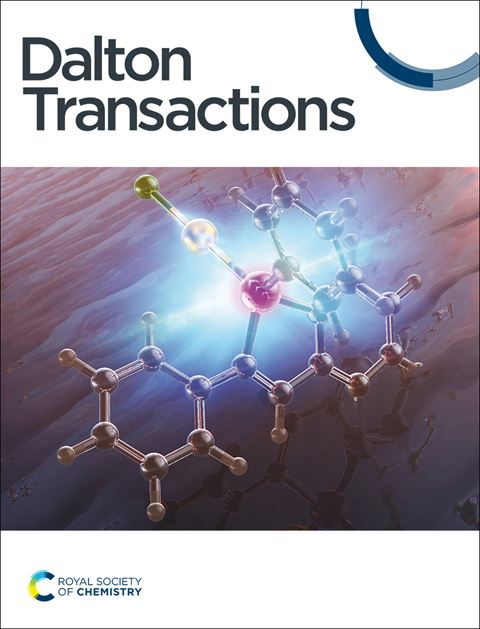影响铕络合物阴极发光强度的关键因素是什么?
IF 3.5
3区 化学
Q2 CHEMISTRY, INORGANIC & NUCLEAR
引用次数: 0
摘要
为了用带有有机配体的配位化合物来替代已被充分研究但难以沉积的无机阴极发光(CL)化合物,最重要的是建立 CL 与光致发光的相关性,以及提高 CL 的强度。本文研究了铕的同配体和混合配体 1,4-对苯二甲酸盐和萘-2,6-羧酸盐,包括新型配体,并确定了其中一种配体(Eu2(nda)3(BPhen)2)的晶体结构。在快速电子的激发下,它们显示出不同强度的发光,这是 Eu3+ 的特征。在未达到饱和状态时,发光强度与 PLQY 相关,而在饱和状态时,发光强度与 PLQY/τ 相关。本文章由计算机程序翻译,如有差异,请以英文原文为准。

What is the key factor affecting the cathodoluminescence intensity of europium complexes?†
In order to substitute well-studied but hard-to-deposit inorganic cathodoluminescent (CL) compounds with coordination compounds and organic ligands, it is primarily important to establish CL correlation with photoluminescence and increase CL intensity. In this paper, homo- and mixed-ligand 1,4-terephthalates and naphthalene-2,6-carboxylates of europium were studied, including a novel complex (Eu2(nda)3(BPhen)2(H2O)4) whose crystal structure was determined. They were found to display luminescence of various intensities under excitation by fast electrons, which is characteristic of Eu3+. CL intensity correlated with PLQY when the saturation regime was not reached and with PLQY/τ in the saturation regime.
求助全文
通过发布文献求助,成功后即可免费获取论文全文。
去求助
来源期刊

Dalton Transactions
化学-无机化学与核化学
CiteScore
6.60
自引率
7.50%
发文量
1832
审稿时长
1.5 months
期刊介绍:
Dalton Transactions is a journal for all areas of inorganic chemistry, which encompasses the organometallic, bioinorganic and materials chemistry of the elements, with applications including synthesis, catalysis, energy conversion/storage, electrical devices and medicine. Dalton Transactions welcomes high-quality, original submissions in all of these areas and more, where the advancement of knowledge in inorganic chemistry is significant.
 求助内容:
求助内容: 应助结果提醒方式:
应助结果提醒方式:


